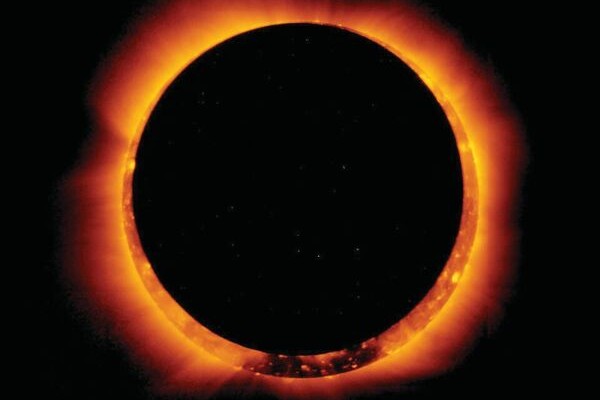What you need to know about the 2017 solar eclipse
The upcoming solar eclipse will leave a 70-mile-wide trail of darkness across the United States on August 21, 2017 (see the map of the eclipse path on pages 44-45). This will be a once-in-a-lifetime event for many people. While another total solar eclipse will make landfall in parts of the United States, Canada, and Mexico in 2024, it won’t be the sea-to-shining-sea shared experience of this year’s event.
How do eclipses happen?
The sun is 400 times larger than the moon, and in an almost miraculous coincidence, the sun is 400 times farther away from the Earth than the moon, so they appear to be the same size. When they line up perfectly, the sun’s disk is obscured, leaving visible only the corona, our star’s outer atmosphere.
Why isn’t there a solar eclipse during every full moon?
The moon’s elliptical orbit usually prevents the sun and the moon from precisely lining up.
Why is this eclipse such a big deal?
There is a total solar eclipse (globally) only every 18 months or so. Because the Earth is 71% water and the moon’s shadow is often cast on uninhabited land, many of these events aren’t witnessed by humans. Also this solar eclipse will be visible only in the U.S. That last happened during the time of the American Revolution.
What’s the difference between a partial and a total eclipse?
University of Maryland observatory director Elizabeth Warner calls a total eclipse “amazing and ephemeral.” During a partial eclipse, the darkness isn’t complete. Even when 99% of the sun is obscured, the sky is 10,000 times brighter than it is during totality. With this eclipse, it will be possible to see stars and even planets with the naked eye. Also, expect wind and a sudden temperature drop as the sky becomes as dark as night. You might notice birds roosting and night insects singing.
Is it safe to look at the sun during an eclipse?
Only during totality when the sun is about as bright as the full moon. Depending on your location, this may last only a few seconds, so don’t take any unnecessary risks! Warner says, “Just like the sunburns you get on your skin, you can get damage on the inside of your eyes. And like the sunburns on your skin, the damage is cumulative. To observe the sun anytime and during the partial phases before and after totality, you do need to use filters.
You have a choice of solar glasses, viewers meeting the ISO 12312-2 standard, or #14 welder’s glasses. Regular sunglasses will not block harmful rays. And if you use a telescope or binoculars, they must also have filters. The American Astronomical Society has more information on the eclipse and safe ways to view the event.
Should I take pictures?
Probably not unless you have a lot of photography experience.
Total eclipses are notoriously difficult to photograph during their short window of time. If you do decide to give it a try, your camera must have a solar lens. And whatever you do, don’t use a flash. It won’t work, and you will only anger nearby eclipse watchers.
Says Warner, “Be aware that lots of folks will, despite the best efforts of astronomy outreach, be finding out about the eclipse only days before, so there will be lots of traffic heading into the path.” Be careful out there!
Adapted from the article of the same name in the 72 Hours section of The Frederick News Post (May 25, 2017), also by xyHt art director Karen Peacock.
For even more details on the eclipse from xyHt‘s Jeff Salmon, read his Pangaea article here.

